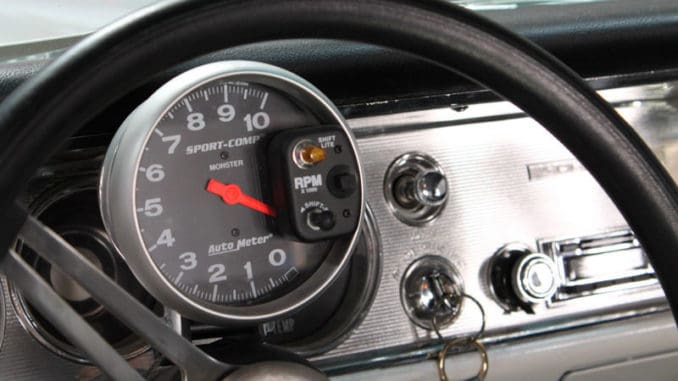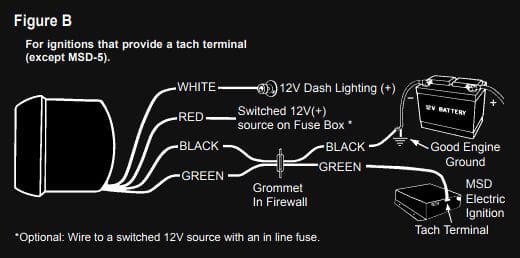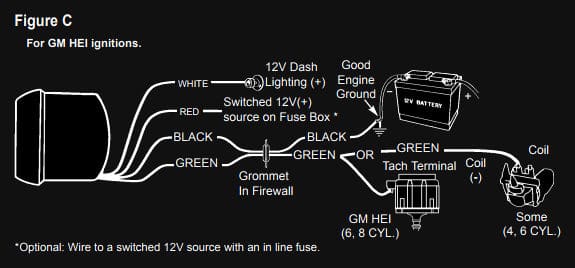
via onallcylinders.com ~ With some exceptions, namely older diesels and Corvettes, most tachometers use electrical pulses from the ignition system to indicate an engine’s rpm.
Though this method delivers an accurate reading, installing a new tach can be confusing because of the different ignition systems used by the OEMs and the aftermarket.
Tachometer installation can be as simple as connecting the tach’s sending wire to the negative side of the ignition coil, while other ignition systems feature a dedicated tach sending circuit.
In either case, installing the tachometer incorrectly can cause significant damage to both the tach and ignition system.
We don’t want that to happen to you, so we looked to the gauge experts at Auto Meter, who created a cheat sheet for tachometer installation.
It includes diagrams for common ignition systems, including those used by General Motors, Ford, and Chrysler plus many aftermarket manufacturers. The tachometers in the diagram use a specific Auto Meter wiring color code, so if you’ve got a different brand of tachometer you should reference its own schematic.



Of course, this cheat sheet only covers the tachometer’s needle movement. Your tachometer will probably have a backlight bulb so you can read it at night, which gets wired into your dashboard’s lighting. This usually involves splicing into another gauge’s lighting wire—but be careful not to exceed the circuit’s current rating. In most cases, the additional current (in amps) from a single bulb is negligible, but it’s important to check anyway to avoid overload.
Shop AutoMeter Tachometers on Amazon.
Auto Meter gave us some other tachometer installation tips too:
- Make sure your tach is set up for your engine’s cylinder count. You’ll often see an internal switch for 4-, 6-, or 8-cylinders.
- To avoid cutting or unsheathing the wire, use a rubber grommet when passing them through a firewall or sheet metal.
- Fans, headers, and other engine hazards can shear or melt your wires—remember that when you route them.
- Don’t connect the tachometer and ignition power leads together. Separate battery leads will prevent excessive voltage drop.
- We recommend soldering wires for this application to ensure a reliable electrical connection.
- If your tach isn’t working or giving inaccurate/erratic readings, check that you’re using the ignition coil recommended by your ignition system’s manufacturer.
- If your tachometer still isn’t working, it’s time to investigate your electrical grounds.




